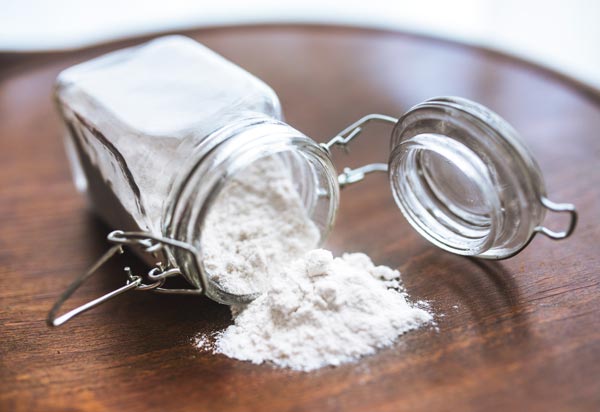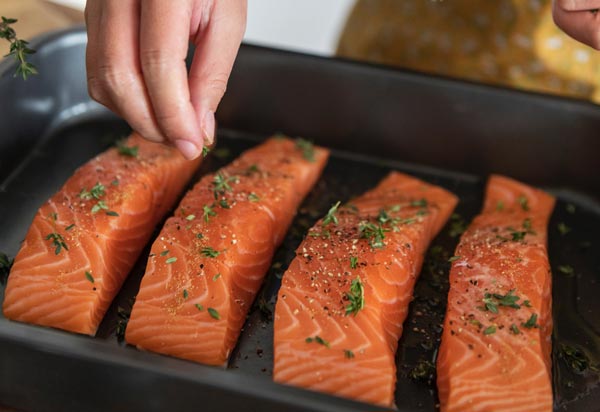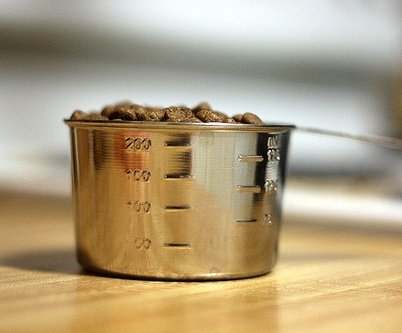
So, you finally got a dog! We here at My Sweet Puppy tip our hats to you for giving a loveable dog a forever home. As a new dog owner, the learning curve can be a bit tough to manage. Even when you’re experienced with dogs, introducing a new one to your home comes with its own unique set of challenges.
One of the most important things to figure out is what your dog will eat. Dog food is probably the no. 1 expense you will incur as a dog owner. The benefit of buying premade dog food is that it comes chock full of nutrients for your growing pup. Over time though, dog food can rack up a large bill. Premade dog food also tends to be lacking in nutritional quality.
Humans get to have all the fun and get to eat something different every day. Most dogs find themselves eating the same kind of dog food day in and day out. Why shouldn’t your dog be treated to the finer things in life? Maybe they deserve a nice home cooked meal from time to time. Making a home-cooked dog meal that has all the right nutrients is a bit tricky, but entirely possible if you know what you are doing. In this article, we will be covering the kinds of nutrients to put in homemade dog food and a couple of recipes you can make in the comfort of your kitchen.
Contents
Benefits of Homemade Dog Food
Although buying premade dog food is usually easier and more convenient, homemade meals have a few advantages. Primarily, homemade meals tend to be made from fresher ingredients and lack any preservatives or artificial flavorings.
Commercial pet food is typically unregulated
Contrary to what many think, pet food blends are not regulated by the USDA. FDA, or AAFCO (Association of American Feed Control Officials). None of these agencies put regulations on what pet food brands can put in their mixes. As such, packaging labels can be inaccurate, and many commercial pet food brands fall short of their advertised quality. Given this lack of regulations, more people are opting to feed their pets home cooked meals. With home cooked meals, you know exactly what your dog is getting.
Better quality ingredients

Unless you are buying dog food with “human-grade” ingredients, the majority of the mix is rendered protein. Rendered meat is made out of the leftover parts and piece of animals and generally has a rather low quality. This low-quality protein can be bad for your dog’s health. Additionally, many commercial dog foods are made at such high temperatures the denature any proteins and deactivate important enzymes, rendering them nutritionally lacking. What’s more, commercial pet food made with human-grade ingredients is about 3 times more expensive than normal pet food. So, the benefits of switching to home cooked meals for your pet are two-fold: better quality ingredients and less money spent.
Less expensive
One of the benefits of home cooked meals is that you can save money by buying large quantities of meat and vegetables while they are on sale. Pet meals can be prepared, packaged, and frozen weeks or months ahead of time. This option works especially well if you have more than one dog.
More options
Many owners feed their dogs the same canned food or kibble every day. While there is nothing wrong with having a routine diet, if you have more options to choose your dogs will appreciate switching things up.
Important Ingredients For Homemade Dog Food
In general, dogs need six basic nutrients to maintain a well-balanced, healthy diet: water, fat, protein, carbohydrates, vitamins, and minerals.
Fats (Oils and Meats)
Dogs need fats and oils to facilitate the uptake of other nutrients and minerals. Fats also protect their internal organs and promote good skin and fur growth. Specifically, dogs require unsaturated fats. Saturated fats are not necessarily bad, but too much can cause heart and blood pressure problems along with weight gain.
Protein (chicken, lamb, turkey, beef, fish, eggs)

Dogs are very active, and their bodies require lots of protein to remain fit. Proteins help with the growth and maintenance of cells, tissues, organs, and the production of antibodies and hormones. To be clear, this does not mean you have to feed your dog a high-meat diet. Dogs are omnivorous by nature and can actually survive and flourish on vegetarian diets. In fact, too much meat can be bad because meat (particularly red meat) tends to be high in cholesterol and saturated fats. In general, it is best to stick to mainly lean meats like poultry and fish. Beef and lamb can be a special treat for your pup.
Carbohydrates (rice, corn, beans)
Carbohydrates provide dogs with a source of the essential molecule glucose. Glucose regulates and drives function all over the body from the internal organs to the brain. Glucose also keeps the intestines healthy.
Minerals (calcium, potassium, sodium, zinc, etc.)
A diet high in essential minerals promotes healthy bone and teeth growth, among other things. A good source of minerals includes vegetables, eggs, nuts, and fruit.
Vitamins (A, B, C, D, E, and K)
Essential vitamins promote healthy sleep, skin, digestion, liver/kidney function, and cell growth.
Along with these important nutrients is water. Water accounts for about 60%-70% of a dog’s body weight, so they need to stay hydrated. Dehydration can cause serious problems in dogs and can make them overheat easily.
Things to Stay Away From In Homemade Dog Food
When making your dog home-cooked meals, make sure to stay away from these ingredients.
Wheat gluten

Wheat gluten is a grain byproduct that is often used in commercial dog food blends as it is a cheaper source of protein than muscle meat or whole-grain carbohydrates. Wheat gluten, in general, is not a good idea to feed your dog as it can harm their digestion. Many commercial dog food manufacturers treat their wheat gluten with melamine, a compound that is actually toxic to dogs in large doses.
“Meat meal”
Always know the type and cut of meat you are feeding your dog. If you see the words “meat meal” or a non-descript “meat” on the package, odds are it is very low-quality meat made from grinding up the leftover parts of animal tissue and bone. Since dog food blends are not regulated by any governing body, you can only really guess as to what products labeled as generic “meat” contain. It could be expired meat, diseased, and even include tumors. Meat meal is also cooked at a high temperature to remove any pathogens which remove most of the good nutrients.
Artificial colorings
While they may make food look pretty, artificial colorings are almost always a bad idea to feed your dog. There is really no reason to use any coloring at all in dog food (trust us, they won’t care) so it’s best to avoid them entirely.
MSG
MSG (monosodium glutamate) is a common filler found in many prepared foods. MSG is normally used to give low-quality ingredients a better flavor but is itself nutritionally useless. In fact, MSG is a known allergen in many humans and pets, so it’s best to stay away from it entirely.
Dog food manufacturers are not required to put MSG on food labels, but you can tell if it’s there by looking for these generic sounding ingredients: hydrolyzed protein, protein isolate, autolyzed yeast, hydrolyzed yeast, calcium caseinate, monopotassium glutamate.
Farmed salmon

Salmon, in general, is a good source of proteins and healthy fats for dogs. However, the wrong salmon can contain harmful toxins. Farm-raised salmon often has mercury, PCB and other fat-soluble toxins added in to increase the flavor. Levels of fat-soluble toxins are 10 times higher than in wild salmon and consuming farm-raised fish is associated with 3 times the risk of developing cancer than wild fish. Make sure to buy wild salmon and wild fish for your dog.
Soy
While dogs are perfectly able to survive and be healthy on vegetarian diets, it is a lot more difficult and takes a creative approach to cooking food. Soy might be a useful non-meat protein source for humans, but it is less useful to dogs. Dogs, due to their biology, cannot process plant-based proteins as efficiently as humans can, which is why most pet owners stick to named meats as a source of protein. Dogs also have a difficult time digesting soy, which can cause bloating and excessive gas. Soy also seems to be a common allergen in both humans and pets, so it’s best to stay away.
Vet Recommended Homemade Dog Food Recipes
Here are some of our top choices for vet recommended homemade dog food recipes
The Old Standard
Ingredients
- 1 ½ cup of brown rice
- 1 tbsp olive oil
- 3 lbs. ground turkey
- 3 cups chopped baby spinach
- 2 cups shredded carrots
- 1 cup shredded zucchini
- ½ canned or frozen peas or green beans
Recipe: Fill a saucepan with about 3 cups of water. Cook the rice per the instructions on the package, then heat the olive oil in a stockpot on medium heat. Add the turkey and cook for 2 to 5 minutes till it is completely brown. One the turkey is cooked, add the spinach, peas, carrots, zucchini, and brown rice and cook until the spinach is wilted and the veggies tender. Let it sit for about 5 minutes before feeding your pet.

Benefits: This particular recipe is extremely easy to make and store in large quantities. You can freeze portions of the mixture and heat them for 15 to 30 second in the microwave for daily meals. The recipe is also very simple and can be modified by adding different types of meat and veggies. It has a 50%:25% ratio of protein to grains.
Beef Stew
Ingredients:
- 1 lb of ground beef, chicken, or turkey
- 1 large potato or sweet potato
- 1 medium sized diced carrot
- ½ cup of frozen peas
- Water
Recipe:
Start by sautéing the meat in a large pot until it is completely no longer pink. Do not drain out the fat as this is the good kind of fat your dog needs. Add the potatoes and carrots and cook until they are soft. Add in just enough water to cover the meat and veggies and let simmer for about 20 minutes. Let it sit for about 10 minutes before serving to your dog.
Benefits: This recipe has many options and can be made with turkey, chicken, beef, or if you are feeling fancy, lamb. Simmer the vegetables until they are soft make their nutrients bioavailable. You can leave out the potato is you want to reduce carbohydrate intake.
Homemade “Classic” Dog Food
Ingredients
- 1 lb. ground beef
- ½ lb. ground chicken
- ½ lb. ground turkey
- 1 lb. baby carrots
- 2 small sized potatoes
- 3 cups brown rice
- 3 beaten eggs
- 3 cups chicken broth
- 2 cups of water
Recipe: Take a large crockpot and cook all three types of meat together until completely cooked. Add the chicken broth and water and cook it all together on medium heat for about 30 minutes. Next, add the potatoes, carrots, and eggs, and cook for another 20 minutes. Let it cool and then portion it out to freeze.
Benefits: This particular recipe is an excellent source of protein by incorporating 3 different kinds of meats. You can switch around the different veggies and leave out the rice if you want a grain-free dish. Best of all, this particular recipe makes enough food for almost 2 weeks. You can add a bit of salt if you want to increase the flavor
Doggie Fish Cakes
Ingredients:
- 2 peeled and chopped large potatoes
- 4 oz frozen peas
- 1 large can of tuna
- 2 cans albacore tuna
- 2 large hardboiled and chopped eggs
- Large handful of chopped parsley
Recipe: Start by boiling the potatoes until they are tender then mash them in a bowl. Add in a dash of parsley and cook the frozen peas in a separate saucepan. In a separate large bowl, mix the salmon, tuna, rest of the parsley, and peas. Cut the mixture into small discs using a cookie cutter and feed to your dog.
Useful Books With Dog Food Recipes
- Yin & Yang Nutrition for Dogs: Maximizing health with Whole Foods, Not Drugs by Judy Morgan and Hue Grant
- Feed Your Best Friend Better: Easy, Nutritious Meals, and Treats for Dogs by Rick Woodford
- Home Cooking for your Dog: 75 Holistic Recipes for a Healthier Dog by Christine Filardi
- The Healthy Hound Cookbook: Over 125 Easy Recipes for Healthy, Homemade Dog Food – Including Grain-Free Recipes by Paris Permenter and John Bigley
Conclusion
A dog is a cherished member of the family and deserves the best. One way to show your appreciation to your pup is to give them the best homemade diet foods. The trick with homemade dog food is to make sure your dog gets the right mixture of nutrients to be healthy. Following these recipe tips will give your dog something to look forward to at mealtimes.
I grew up in a household that was filled with animals. I believe that my fate as a dog-loving person was sealed in early childhood since my parents owned several dogs of varying sizes and breeds. There was no choice but to take care of and learn about dog habits and the best animal care practices — otherwise, I’d be clueless about how to go about the creatures I was surrounded by day and night.
As a life-long puppy lover, I know a thing or two about dogs and how to go about caring for them in the best way possible. Although I’m not a professionally trained dog behaviorist, trainer, or veterinarian, all of my knowledge and experience with canines comes from a place of love and a deep-rooted passion for dogs and animals in general.
Seeing as dogs kept me company throughout every stage of my life, I decided to follow a different path in my academic life and obtained a Bachelor’s and Master’s degrees in Marketing Management and Digital Advertising, which ultimately allowed me to combine my professional training and personal experience by creating the ultimate dog lover’s resource website! Along with my husband, Dave, I run MySweetPuppy for like-minded dog lovers who want to have a single, clear, and reliable information source about anything and everything related to dogs and their well-being.



